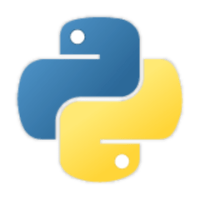📖
huggingface autotrainをgoogle colabで試してみた
huggingface autotrainとは
huggingface autotrainとは、データセットさえあれば誰でも簡単にLLMやStable diffusionを学習することができるprojectです。
今回はstable diffusion xlを対象にやってみようと思います。
リンク
準備
Google Colabを開き、メニューから「ランタイム→ランタイムのタイプを変更」でランタイムを「GPU」に変更します。
環境構築
インストール手順です。
import os
!pip install -U autotrain-advanced > install_logs.txt
!autotrain setup > setup_logs.txt
推論
(1)Settings
#@markdown ---
#@markdown #### Project Config
project_name = 'my_dreambooth_project' # @param {type:"string"}
model_name = 'stabilityai/stable-diffusion-xl-base-1.0' # @param ["stabilityai/stable-diffusion-xl-base-1.0", "runwayml/stable-diffusion-v1-5", "stabilityai/stable-diffusion-2-1", "stabilityai/stable-diffusion-2-1-base"]
prompt = 'photo of a <new1> dog' # @param {type: "string"}
#@markdown ---
#@markdown #### Push to Hub?
#@markdown Use these only if you want to push your trained model to a private repo in your Hugging Face Account
#@markdown If you dont use these, the model will be saved in Google Colab and you are required to download it manually.
#@markdown Please enter your Hugging Face write token. The trained model will be saved to your Hugging Face account.
#@markdown You can find your token here: https://huggingface.co/settings/tokens
push_to_hub = False # @param ["False", "True"] {type:"raw"}
hf_token = "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" #@param {type:"string"}
repo_id = "username/repo_name" #@param {type:"string"}
#@markdown ---
#@markdown #### Hyperparameters
learning_rate = 1e-4 # @param {type:"number"}
num_steps = 500 #@param {type:"number"}
batch_size = 1 # @param {type:"slider", min:1, max:32, step:1}
gradient_accumulation = 4 # @param {type:"slider", min:1, max:32, step:1}
resolution = 1024 # @param {type:"slider", min:128, max:1024, step:128}
use_8bit_adam = True # @param ["False", "True"] {type:"raw"}
use_xformers = True # @param ["False", "True"] {type:"raw"}
use_fp16 = True # @param ["False", "True"] {type:"raw"}
train_text_encoder = False # @param ["False", "True"] {type:"raw"}
gradient_checkpointing = True # @param ["False", "True"] {type:"raw"}
os.environ["PROJECT_NAME"] = project_name
os.environ["MODEL_NAME"] = model_name
os.environ["PROMPT"] = prompt
os.environ["PUSH_TO_HUB"] = str(push_to_hub)
os.environ["HF_TOKEN"] = hf_token
os.environ["REPO_ID"] = repo_id
os.environ["LEARNING_RATE"] = str(learning_rate)
os.environ["NUM_STEPS"] = str(num_steps)
os.environ["BATCH_SIZE"] = str(batch_size)
os.environ["GRADIENT_ACCUMULATION"] = str(gradient_accumulation)
os.environ["RESOLUTION"] = str(resolution)
os.environ["USE_8BIT_ADAM"] = str(use_8bit_adam)
os.environ["USE_XFORMERS"] = str(use_xformers)
os.environ["USE_FP16"] = str(use_fp16)
os.environ["TRAIN_TEXT_ENCODER"] = str(train_text_encoder)
os.environ["GRADIENT_CHECKPOINTING"] = str(gradient_checkpointing)
(2)finetuning
finetuningのためのデモデータを準備します。
!wget https://www.anicom-sompo.co.jp/inu/wp-content/uploads/2023/05/GettyImages-1323306331-scaled.jpg -P /content/images
!autotrain dreambooth \
--model ${MODEL_NAME} \
--output ${PROJECT_NAME} \
--image-path images/ \
--prompt "${PROMPT}" \
--resolution ${RESOLUTION} \
--batch-size ${BATCH_SIZE} \
--num-steps ${NUM_STEPS} \
--gradient-accumulation ${GRADIENT_ACCUMULATION} \
--lr ${LEARNING_RATE} \
$( [[ "$USE_FP16" == "True" ]] && echo "--fp16" ) \
$( [[ "$USE_XFORMERS" == "True" ]] && echo "--xformers" ) \
$( [[ "$TRAIN_TEXT_ENCODER" == "True" ]] && echo "--train-text-encoder" ) \
$( [[ "$USE_8BIT_ADAM" == "True" ]] && echo "--use-8bit-adam" ) \
$( [[ "$GRADIENT_CHECKPOINTING" == "True" ]] && echo "--gradient-checkpointing" ) \
$( [[ "$PUSH_TO_HUB" == "True" ]] && echo "--push-to-hub --hub-token ${HF_TOKEN} --hub-model-id ${REPO_ID}" )
(3)inference
from diffusers import DiffusionPipeline, StableDiffusionXLImg2ImgPipeline
import torch
prj_path = "my_dreambooth_project/"
model = "stabilityai/stable-diffusion-xl-base-1.0"
pipe = DiffusionPipeline.from_pretrained(
model,
torch_dtype=torch.float16,
)
pipe.to("cuda")
pipe.load_lora_weights(prj_path, weight_name="pytorch_lora_weights.safetensors")
prompt = "photo of a <new1> dog in a bucket"
seed = 42
generator = torch.Generator("cuda").manual_seed(seed)
image = pipe(prompt=prompt, generator=generator).images[0]
display(image)

最後に
今回は簡単にfinetuningが試せるautotrainを利用してみました。設定の数がaccelerateとかに比べて激減していて非常にいい感じですね。dreamboothをするならautotrain一択かも!
今後ともLLM, Diffusion model, Image Analysis, 3Dに関連する試した記事を投稿していく予定なのでよろしくお願いします。




Discussion